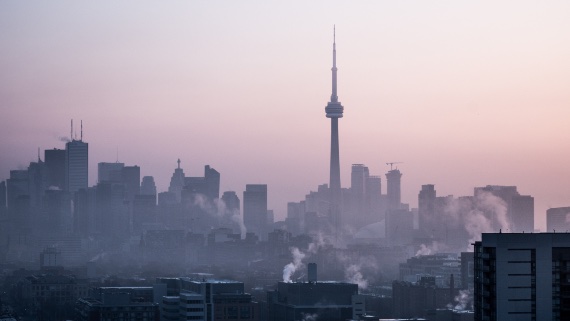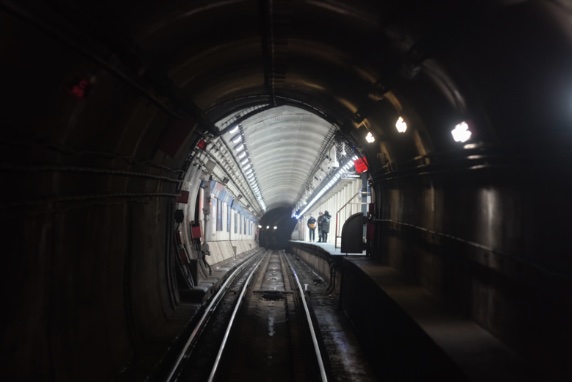“If you can’t beat your enemy, join him.” Applied to the climate emergency, this saying could take on the provocative meaning that if climate change cannot be reversed—at least not in the short term—let’s try to harness it. One way to reduce fossil fuel consumption would be to recycle the heat that builds up in the ground beneath cities as a result of human activity and rising temperatures.
The ambitious goal of achieving a net zero carbon balance by 2050 has become even more urgent due to the current energy crisis, which is already imposing, for starters, a cut in heating hours for this coming winter.
This situation explains the growing boom in sustainable housing—dwellings that try to minimise their impact on the environment through architectural solutions—and the use of renewable energies.

But what if we were to apply this idea of passive housing and clean energy to entire cities? A recent study proposes the idea of recycling the heat accumulated under the surface of large cities. The researchers analysed the conditions at more than 8,000 locations in Europe, North America and Australia, and found that more than half of them store significant reserves of heat energy under their foundations.
Urban “heatbergs”
Until now, cities have been considered heat islands because the intense activity of humans and their buildings cause the air around them to heat up. But in view of the results of the study, perhaps it would be more appropriate to speak of “heatbergs”, as built-up areas also warm the subsoil, causing heat to accumulate below the surface.
Where does this underground heat come from? Unlike underexploited geothermal energy—whose origin lies deep in the Earth’s interior—the heat stored in the subsurface of cities is a direct consequence of human activity. There is a concentration of heat released by underground structures such as car parks, garages, tunnels or subway lines, as well as from the materials used in urbanised surfaces, such as cement and asphalt. Some of it is released into the atmosphere, contributing to the heat island effect, but some is transferred underground, where it builds up.

In fact, according to the study, of the more than 8,000 locations studied, almost half have accumulated enough heat in the narrow strip of 20 metres below their surface to satisfy local heat energy demand for a year. This is particularly relevant considering that energy for space and water heating in homes currently accounts for 60-70% of the energy demand of houses and residential buildings.
Not only that, but this heat source has other advantages to consider:
- It is clean energy, as its capture and consumption does not generate extra emissions.
- Unlike solar or wind energy, it is independent of the weather.
- It has a minimal impact on ecosystems and the environment, and part of that impact is positive because removing the accumulated heat brings the subsoil back to its original conditions.
- There is no need for costly transportation, since the heat source is located directly beneath the city that requires it.
- The infrastructure necessary for its recycling already exists, as it would be analogous to that used in geothermal power plants, and easier to implement, as it would be at ground level.
Clean energy… and renewable?
The main question raised by this new source of clean energy to be exploited is therefore whether it is really a viable alternative in the long term and worth the investment, or whether, on the contrary, it would cease to be feasible once the heat reserves accumulated as a result of many years of intensive human activity have been exhausted.
Even if cities were to minimise their underground activity and artificial surfaces and structures, there would still be a flow of heat underground, says the international research team led by Dalhousie University in Canada in their research published in Nature Communications. Furthermore, given that global warming will persist even when net zero emissions are reached—and will only begin to abate many years later—the energy demand for heating will also decrease over time, so that the heat extracted from below the surface would continue to cover a significant percentage of such energy needs, as the authors conclude in their analysis.

This assertion, based on the assessment of future conditions using climate projection models, has allowed the researchers to conclude that, even in the most favourable scenario, global warming will continue to cause the average surface temperature of the planet to rise in such a way that more than 70% “of all studied locations would be able to fulfil their annual heating demand by the end of the century by simply recycling the heat input from the surface and buildings.” Even more so if we consider that, by then, the infrastructure for its recovery and use would be optimised to maximise its performance.
In fact, as well as being a viable long-term alternative, there may also be a downside to not embracing this low-carbon heating method. As study leader Dr Susanne Benz points out, “heat will continue to accumulate in the underground adversely affecting water quality and ecosystems.”
Comments on this publication